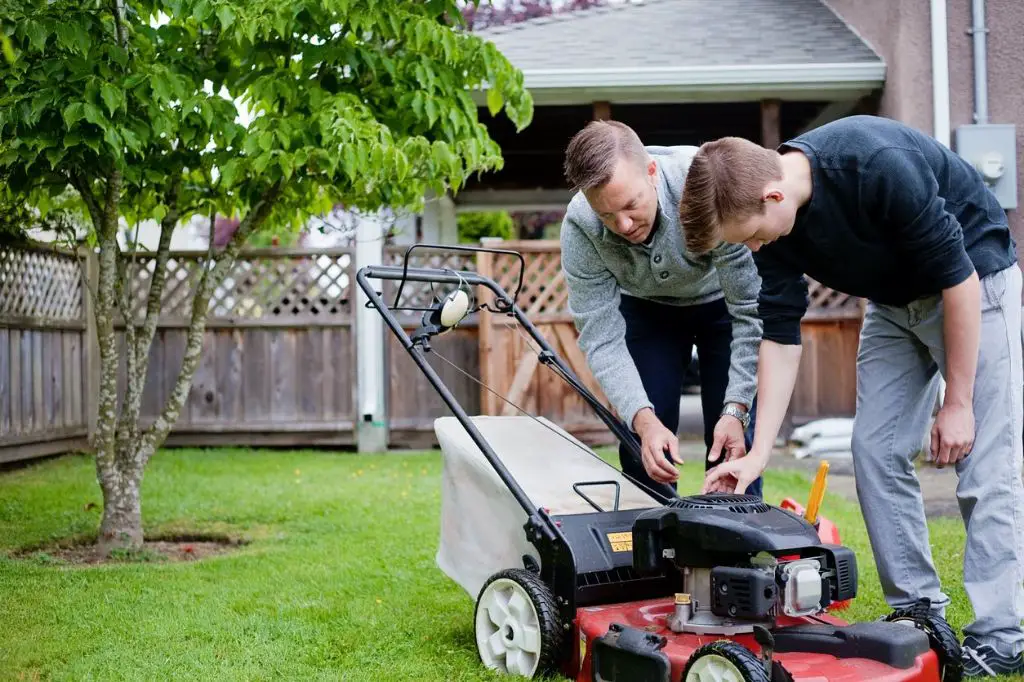A properly maintained lawn mower that won’t start can be frustrating. There are a number of issues that could be causing the problem, but with some basic troubleshooting, you can likely get your mower running again. Here are some of the most common reasons a lawn mower won’t start and tips for how to diagnose and fix the issue.
Page Contents
Fuel Related Issues
One of the first things to check when a lawn mower won’t start is fuel issues. There are a few common fuel-related problems that could be preventing the engine from starting:
- Empty fuel tank – Make sure there is fresh fuel in the fuel tank. If the tank is empty, refill it with fresh fuel.
- Stale fuel – If the fuel has been sitting in your mower for more than 30 days, it can start to degrade and cause issues. Drain the old fuel and replace it with fresh fuel.
- Dirty carburetor – The carburetor mixes air and fuel for the engine. If it gets clogged with dirt or debris, it can cause the engine to not receive the fuel it needs to run. Cleaning the carburetor can often resolve this.
- Faulty fuel pump – Most lawn mowers have a fuel pump to deliver fuel from the tank to the carburetor. If this pump fails, fuel won’t reach the engine. Replacing the pump should fix this.
Checking these common fuel-related issues is a good starting point when troubleshooting a lawn mower that won’t start due to fuel problems.
Ignition System Problems
Issues with the ignition system can also cause problems when starting a lawn mower. The ignition system generates the spark that ignites the fuel to power the engine. Here are some ignition system components to inspect:
- Spark plug – The spark plug provides the spark that ignites the fuel. If the spark plug is defective, covered in debris, or has the incorrect gap, it can cause no start issues. Replacing or adjusting the spark plug may help.
- Magneto – The magneto uses rotating magnets to generate voltage for the spark plug. If it is damaged or defective, it may not be generating proper voltage. Replacing the magneto can resolve no spark issues.
- Spark plug wire – This wire delivers the spark from the magneto to the spark plug. If it is damaged or disconnected, it can disrupt the spark. Reconnect or replace worn spark plug wires as needed.
Testing the spark plug by grounding it while cranking the engine can confirm if the ignition system is working properly. No spark indicates an ignition problem is the likely cause.
Engine Compression Issues
Proper engine compression is required to ignite the fuel inside the cylinder. A lack of compression will cause difficulty starting. Some causes include:
- Broken piston rings – The piston rings seal the combustion chamber to maintain good compression. Damaged rings will reduce compression. Engine repair is needed to replace piston rings.
- Blown head gasket – A blown head gasket allows compressed gases to escape, lowering compression. The head gasket needs to be replaced to fix this issue.
- Stuck valves – Valves must open and close at the proper time for good compression. Sticking valves will ruin the timing. Valves may need grinding or replacement to restore proper operation.
Testing compression with a gauge can help identify if low compression is the root cause of starting issues.
Electrical Issues
Since the starter motor cranks the engine to get it going, electrical problems can also prevent successful starting. Electrical issues to look for include:
- Weak battery – The battery must be fully charged to enable proper starter operation. Recharge or replace a weak battery.
- Faulty starter motor – If the starter motor is damaged or worn out, it may not crank fast enough to start the mower. Replace a faulty starter.
- Broken starter solenoid – This relay engages the starter when the ignition is turned. Replace a broken solenoid.
- Blown fuse – Check any fuses related to the starting system. Replace blown fuses.
Listening for a clicking noise or slow cranking can help indicate an electrical issue is preventing the engine from starting.
Conclusion
There are a number of potential issues that can cause a lawn mower to not start, but systematic troubleshooting and testing can help narrow down the problem. Always start with the simple solutions like checking the fuel level and spark plug before moving on to more complex repairs. Persistence and methodical diagnosis will eventually lead you to the underlying cause so you can get your mower running again.
